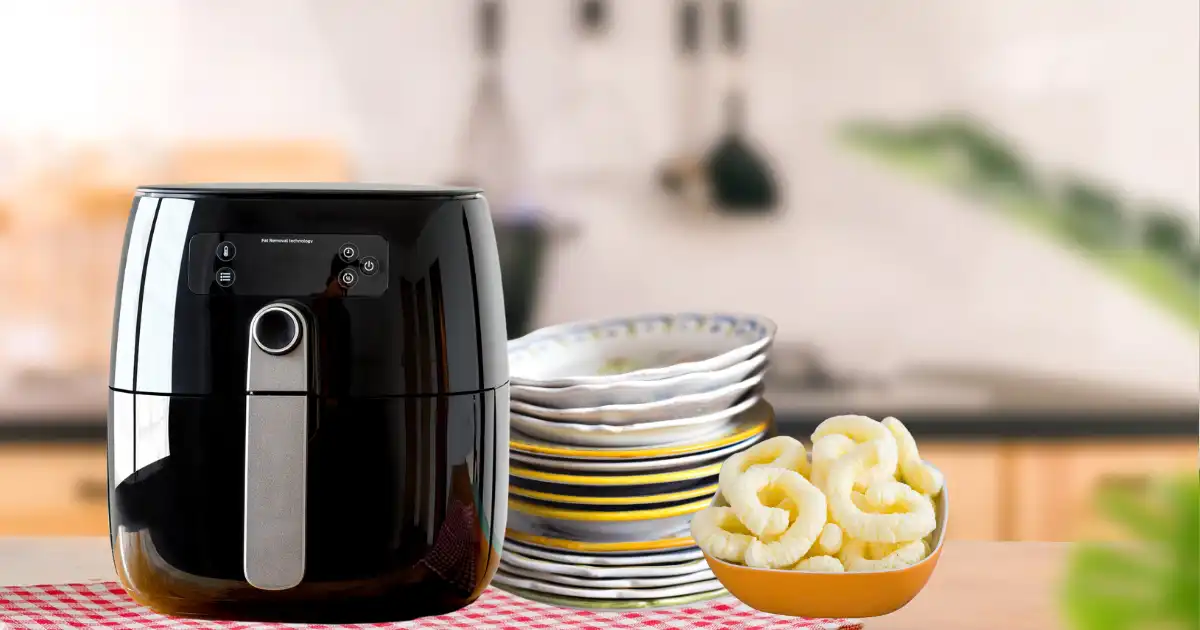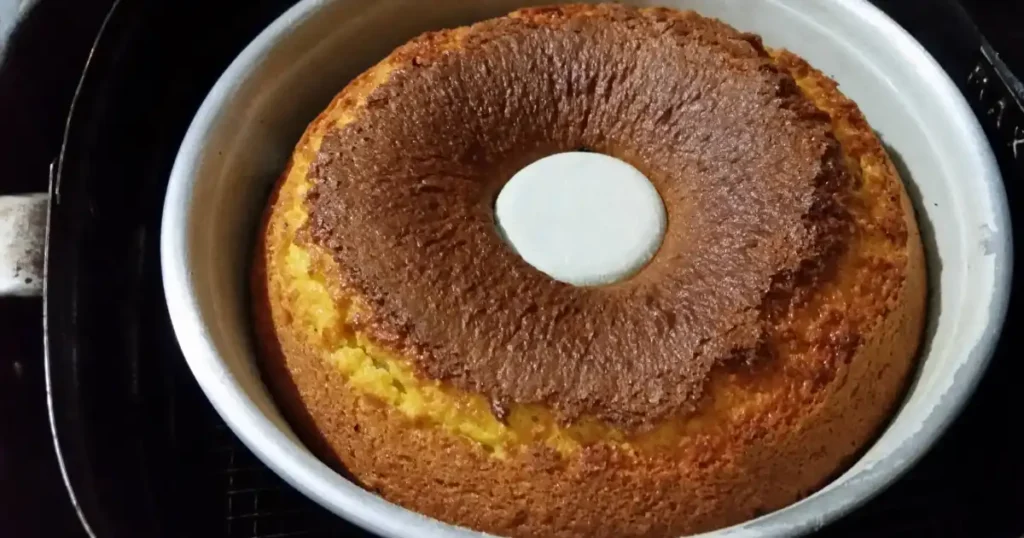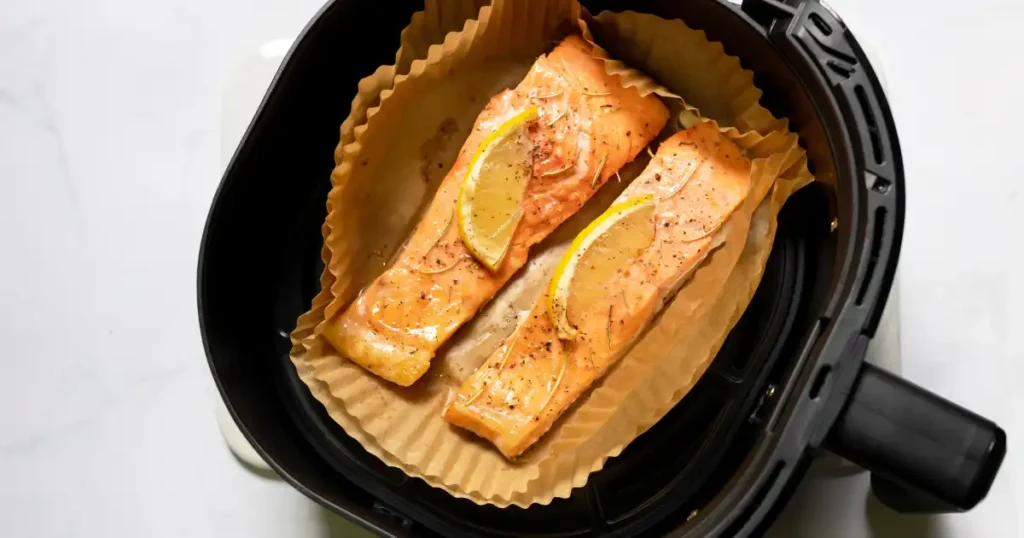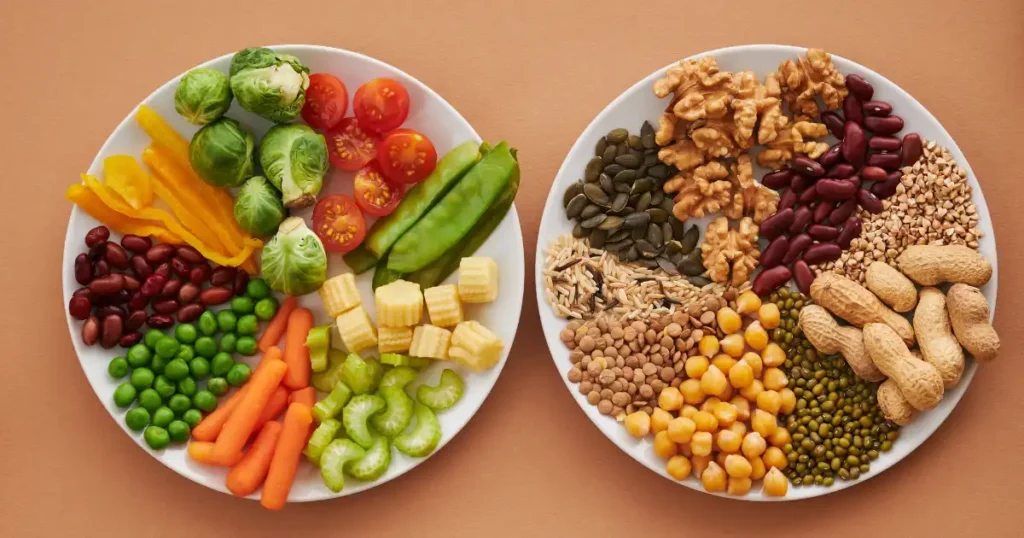
Table Of Content
Ever stood in the kitchen with a meal prepped, staring at your state-of-the-art air fryer, and pondering “Can I put a plate in the air fryer?” You’re not alone.
This modern dilemma troubles many culinary enthusiasts as they wade through do’s and don’ts trying to avoid damage to their handy appliance or worse, a kitchen disaster.
But here’s a breath of relief: we’re slicing through the confusion with hot-off-the-press insights! Keep reading as we reveal whether your dinnerware can take a spin in the air fryer, ensuring you enjoy your meals with an extra serving of safety and convenience.
All about Can I Put a Plate in the Air Fryer?
When it comes to air fryers, safety and compatibility are key. Not all materials are created equal, and the same goes for the plates you may want to use inside your fryer. Before you go placing any plate inside and hitting ‘start’, it’s paramount to understand what kinds of plates are air fryer-friendly. Let’s delve into the specifics of what materials are safe, how they interact with the high heat of air frying, and what you should absolutely avoid to ensure your kitchen escapades remain both enjoyable and incident-free.

Suitable Plate Materials for Air Frying
Determining which plates are safe to use in an air fryer comes down to their material and heat tolerance. Ceramic, glass, and any metal that is oven-safe are typically suitable choices.
Ceramic plates can often withstand the high temperatures of air frying, but always check for a label indicating it’s oven-proof to prevent any mishaps.
Glass dishes should also be tempered for safety. Metal pans, on the other hand, are excellent conductors of heat and can stand up to the air fryer’s environment, provided they don’t have non-stick coatings that could break down under intense heat.
It’s critical to avoid plates with plastic elements or decorations that may melt or emit harmful chemicals. Always consult your air fryer’s manual for specific guidance on acceptable materials.
The Risks and Precautions When Using Plates in an Air Fryer
When experimenting with plates in your air fryer, you run certain risks if the material is not apt for high heat exposure.
Thermal shock is one such risk, where rapid temperature change can cause materials like glass or ceramic to crack or even shatter, resulting in potential injury or damage to your appliance. Moreover, using plates with plastic coatings or decals can lead to melting or burning, emitting unpleasant odors and harmful chemicals that could contaminate your food.
To avert these risks, it’s vital to only use plates certified as oven-safe by the manufacturer. Prior to air frying, gradually bring the plate to temperature if possible, to minimize the chances of thermal shock. Additionally, ensure that the plate fits comfortably inside the fryer basket without obstructing the air circulation, as this could lead to uneven cooking or overheating of the appliance. Always wear heat-resistant gloves when handling plates within the air fryer, as they can become extremely hot. By following these precautions, you can safely enjoy the versatility of your air fryer without sacrificing safety.
Addressing Overheating Concerns with Plates in Air Fryers
When discussing the question “Can I put a plate in the air fryer?” a key consideration is the issue of overheating. Overheating is not only harmful to the air fryer itself but could also become hazardous if it leads to the burning of materials not suited to high temperatures. Air fryers work by circulating hot air around the food, and if a plate obstructs this flow, it can cause the appliance to overwork, potentially leading to malfunction or shortening its lifespan.
To prevent overheating, always ensure that the plate you’re using allows for adequate air circulation. This means selecting a plate that is not too large for the air fryer basket. Furthermore, it’s wise to avoid overloading the plate with food, which can trap heat and further restrict airflow. By being mindful of these factors, you can help retain the air fryer’s efficiency and protect your kitchen equipment while exploring the culinary possibilities of air frying with different plate types.
Tips for Selecting Air Fryer-Friendly Plates
- Check Material Suitability: Always begin by confirming that the plate material is able to withstand high temperatures. Ideal materials are ceramic, glass, and metal that is marked as oven-safe.
- Look for Oven-Proof Labels: For ceramic plates, seek confirmation that they are specifically labeled as oven-proof to avoid any potential for thermal shock.
- Ensure Glass Is Tempered: When opting for glass dishes, they must be tempered, which means they’re strengthened for high heat use.
- Avoid Decorated or Plastic Containing Plates: Plates that feature decorative patterns or plastic components are a no-go, as they can melt or release harmful chemicals at high temperatures.
- Check for Size and Fit: Ensure that the plate can be placed comfortably in the air fryer basket without hindering the unit’s air flow, which is crucial for both safety and cooking efficiency.
- Air Circulation Is Key: The plate should not rest against the sides of the basket or cover the entire bottom surface, as proper air circulation is essential for the air fryer to function correctly.
- Manufacturer’s Instructions: Consult the air fryer’s user manual for any specific recommendations or restrictions regarding the use of plates within the device.
- Gradual Preheating: If your air fryer has the option, try to preheat the plate along with the air fryer to minimize the risk of thermal shock.
- Use Caution When Handling: Air fryers can heat plates to extremely high temperatures. Always use heat-resistant gloves when inserting or removing plates to prevent burns.
- Do Not Overload: When using a plate, avoid overloading it with food. This can trap heat and potentially cause overheating, impacting both your food and the machine’s functionality.
Step-by-Step Guide to Using Different Types of Plates in an Air Fryer
Using a plate in your air fryer can be as simple as following these steps for each material type:
Using Ceramic Plates
- Check for Oven-Safe Label: Confirm the plate is labeled as oven-proof.
- Gradual Temperature Increase: If possible, allow the ceramic plate to warm up with the air fryer to avoid thermal shock.
- Placement: Place the plate in the basket, ensuring it doesn’t block airflow.
Using Glass Dishes
- Verify the Glass is Tempered: Only use glass that is specified as tempered or heat-resistant.
- Preheating: Similar to ceramic, preheat the glass dish if possible.
- Careful Handling: Always handle with caution, as glass can get very hot.
Using Metal Pans
- Oven-Safe Metal: Select metal pans that are designated as oven-safe.
- No Non-Stick Coatings: Avoid pans with non-stick coatings that might degrade at high temperatures.
- Correct Sizing: Ensure the metal pan fits without touching the sides of the basket.
Using Silicone Mats or Molds
- Heat Resistant Silicone: Choose silicone accessories that are designed to stand up to high temperatures.
- No Direct Contact with Heating Elements: Place silicone mats or molds on top of a metal tray or rack if possible.
- Avoid Covering Vents: Confirm that the silicone item doesn’t cover the airflow vents in the basket.
By following these steps for each type of plate, you can expand your air frying options while preserving both your food’s integrity and the appliance’s lifespan. Always refer to the manufacturer’s instructions as the final authority on what is safe to use in your specific air fryer model.
Challenges With Using Plates in an Air Fryer
- Risk of Thermal Shock: When asking, “Can I Put a Plate in the Air Fryer?”, consider that sudden temperature changes can cause materials like ceramic and glass to crack, known as thermal shock.
- Obstructed Air Flow: Plates can block the circulating hot air essential for an air fryer to cook food effectively, leading to unevenly cooked meals.
- Potential for Overheating: Using the wrong plate size or material may result in the air fryer working harder than necessary, potentially leading to overheating and appliance damage.
- Material Restrictions: Not all materials are suitable for use in an air fryer; some may melt, warp, or release toxic fumes at high temperatures, posing a safety risk.
- Limited Cooking Space: Introducing a plate into the air frying basket reduces the space available for food, which can be limiting when preparing meals for multiple people.
- Difficulty in Cleaning: If food spills onto the plate during the cooking process, it can bake on tightly due to the high heat, making cleaning more difficult.
- Varied Preheating Times: Plates may require different preheating times based on material and thickness, complicating the cooking process.
- Handling Hazards: Removing a hot plate from an air fryer presents a burn risk, necessitating the use of heat-resistant gloves or mitts.
- Specificity to Air Fryer Models: Some air fryer designs may not accommodate plates at all, limiting the use of this cooking method.
- Compliance with Warranty: Using plates not recommended by the manufacturer may void the appliance’s warranty.
Types of Plates To Avoid Using in An Air Fryer
- Plastic or Meltable Plates: Any plates made from or containing plastic are not suitable for air fryers as they can melt and potentially release harmful chemicals.
- Wooden or Bamboo Plates: These materials can scorch, catch fire, or warp when exposed to the high temperatures of an air fryer.
- Plates with Gold or Silver Trim: Decorative metal trim on plates can spark and damage both the plate and the air fryer.
- Poorly Insulated Stoneware: Some stoneware plates might not withstand the rapid heating of air fryers and could crack or break.
- Flimsy Disposable Plates: Paper or thinly constructed disposable plates cannot endure the air fryer’s heat and can ignite or disintegrate.
- Non-Microwave-Safe Ceramic: Ceramics not labeled for microwave or oven use may contain materials that cannot tolerate high heat and may crack or emit toxins.
- Regular Glass Plates: Unless specifically designed to be heat-resistant, regular glass should not be used and can shatter due to thermal shock.
- Plates with Non-Temperature-Resistant Coatings: Any plates with coatings not designed to withstand high temperatures can degrade and pollute your food with particles or gases.

Guidelines for Preheating Plates in Air Fryers
To safeguard your dishes and enhance culinary results, preheating plates in your air fryer should be performed with care. Start by selecting a plate that is both oven-safe and fits well in the basket to encourage adequate air circulation.
If your air fryer has a preheat function, make use of it to gradually bring the plate up to temperature alongside the air fryer. This mitigates the risk of thermal shock, especially for ceramic and glass dishes. Always handle the heated plates with protective oven mitts or grips to prevent burns. Preheating plates can help achieve a more even cooking temperature and can be especially beneficial when air frying denser food items.
Tips for Cleaning Air Fryer Plates Step by Step
- Allow to Cool: Before attempting to clean, always let the plate cool down to avoid burns and prevent any damage from sudden temperature change.
- Soak in Warm Water: If residues are stubborn, soak the plate in warm soapy water to loosen any baked-on food.
- Use Non-Abrasive Tools: Clean the plate with a soft sponge or cloth to avoid scratching the surface.
- Rinse Thoroughly: Ensure all soap and food particles are rinsed off to prevent any residue from baking on during future use.
- Dry Completely: After washing, dry the plate completely with a clean towel to prevent water spots and ensure it’s ready for its next use.
- Check for Damage: Before reusing the plate, inspect it for any cracks or damage that could be exacerbated during heating.
- Store Safely: Store the plate in a safe place where it won’t be at risk of falling or being damaged before its next use.
Conclusion:
In conclusion, while the question Can I Put a Plate in the Air Fryer? taps into the inventive spirit of home cooks eager to maximize their air fryer’s potential, it’s clear that caution and knowledge are paramount. The reality is that not all plates are created equal, especially when it comes to withstanding the high heat of an air fryer. Mindful selection of suitable materials and adherence to safety guidelines are crucial to avoid thermal shock, preserve airflow, and ensure a delicious outcome without compromising the appliance’s integrity or one’s health. Regular maintenance and careful handling further extend the life of both your air fryer and dishes used within it. Ultimately, armed with the right practices, the air fryer can continue to be a versatile tool in your culinary arsenal while ensuring safety remains the top ingredient in every recipe.

FAQs
What dishes can you not put in an air fryer?
You should avoid using plastic, meltable materials, wooden, bamboo, decorative metal trimmed, poorly insulated stoneware, flimsy disposables, non-microwave-safe ceramics, regular glass, and any plates with non-temperature-resistant coatings in an air fryer.
Can you heat up a plate in an air fryer?
Yes, you can heat an oven-safe plate in an air fryer, provided it fits comfortably without obstructing the air circulation. Make sure to preheat the plate with the air fryer to avoid thermal shock.
What kind of plates can you put in an air fryer?
You can use any plates that are labeled as oven-safe, such as certain ceramics, tempered glass, metal, or cast iron plates, as long as they are designed to withstand high temperatures.
Can you put a glass dish in an air fryer?
Only if the glass dish is designed to be heat-resistant or is tempered for high temperatures. Regular glass dishes are at risk of shattering due to thermal shock and should not be used in an air fryer.
Can you put raw meat in an air fryer?
Yes, you can cook raw meat in an air fryer. Make sure to cook it to the proper internal temperature to ensure food safety. Always check the manual for specific instructions regarding the cooking times and temperatures for different meats.








Very interesting subject, appreciate it for posting.Expand blog
Thank you so much for your kind words! I’m glad you found the article interesting. If you have any more questions or topics you’d like me to cover, feel free to let me know. Happy air frying! 😊